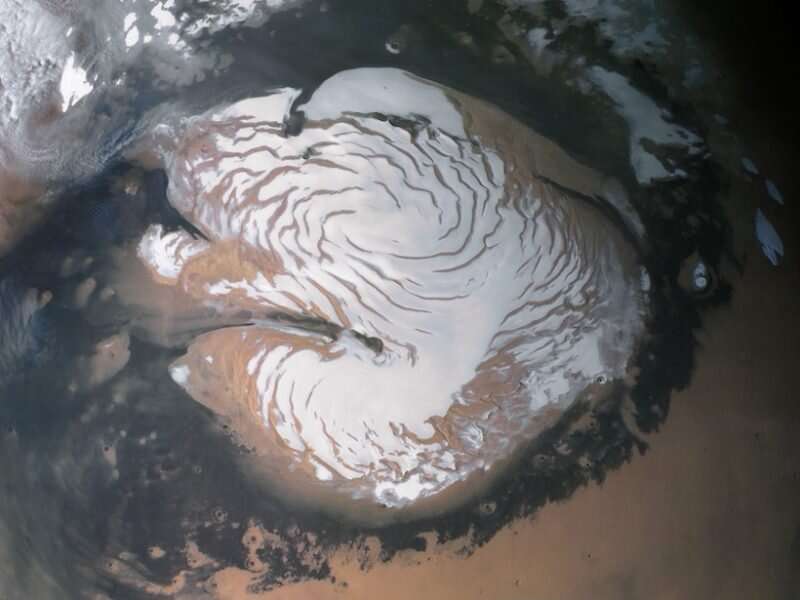Decoding the age of the ice at Mars' north pole

Mars' north pole contains a large ice cap made up of many layers of frozen water. Like ice cores on Earth, those layers offer a tantalizing record of climate on Mars over the past several million years. The first step in decoding that climate record is to figure out how those layers form and how old each one might be—a difficult task to perform from orbit.
In a new study, Wilcoski and Hayne used high-resolution surface topography data captured by the High Resolution Imaging Science Experiment (HiRISE) aboard the Mars Reconnaissance Orbiter to attempt to chart the evolution of the ice over time. The researchers looked at the roughness of the top layer of ice—which shows a variety of regular ripples and ridges of various sizes and shapes—and used the satellite imagery to validate a model that simulated interactions with the Martian polar climate and that reproduced the rough topography of the ice cap.
The model works by simulating how solar radiation can give rise to the ripples observed by the orbiter. It indicates that small bumps in the ice's surface tend to become exaggerated over time as insolation ablates the Sun-facing side of the bump but not the backside, creating a series of ridges and valleys that become more pronounced over time.
Once the model was able to replicate this behavior, the researchers used it to show that the resultant ripples should be about 10 meters across and 1 meter deep. As the features age, the wavelength—the distance between each ripple—increases, and the ripples move toward the pole. This behavior held constant regardless of whether the researchers increased the atmospheric water vapor density or dialed it to zero, suggesting that the pattern forms regardless of whether the total amount of ice is increasing or decreasing.
If the new model is accurate, the surface roughness observed on the ice cap at Mars's north pole should form in 1,000–10,000 years, the authors say, providing a starting point for understanding the climate history of the planet.
More information: A. X. Wilcoski et al. Surface Roughness Evolution and Implications for the Age of the North Polar Residual Cap of Mars, Journal of Geophysical Research: Planets (2020). DOI: 10.1029/2020JE006570
Provided by American Geophysical Union
This story is republished courtesy of Eos, hosted by the American Geophysical Union. Read the original story here.





















